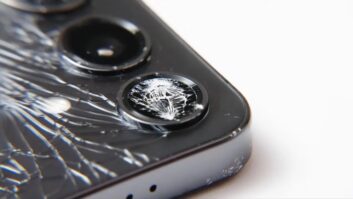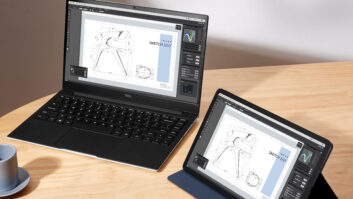NEW YORK —
Smartphones, Android-based models
in particular, continued their relentless climb to
sales dominance in 2010, consumer surveys and
carrier financial reports show.
The Nielsen Company found in its fourth-quarter
consumer survey that 45 percent of people who
bought a cellphone in the previous six months
bought a smartphone, up from the third-quarter survey’s
41 percent, the second-quarter survey’s 35
percent, and the first quarter’s 33 percent.
All told, as of December, 31 percent of cellphone
subscribers in the U.S. owned a smartphone, up sequentially
from 28 percent at the end of the third
quarter, Nielsen found.
Also underscoring smartphones’ advances in the
U.S. were separate announcements from:
• The NPD Group, whose quarterly consumers
surveys found that, for the first time, smartphones
accounted for all of the top five selling phones purchased
by consumers in the quarter ending December
2010.
• In-Stat, which released a study projecting that smartphones will account for more than half of U.S.
handset shipments in 2012.
• Verizon Wireless, which said more than 75 percent
of the 872,000 retail postpaid net new subscribers acquired
in the fourth quarter bought smartphones, bringing
the percentage of retail postpaid subscribers with
smartphones to 26 percent, up from a year-ago 15 percent.
• AT&T, which said sales of smartphones and other
integrated phones that include a keyboard, accounted
for 80 percent of postpaid-service phone sales in the
fourth quarter, raising the percentage of AT&T’s 68 million
postpaid subscribers with integrated devices to 61
percent, up from a year-ago 46.8 percent.
Consumer surveys attributed most of the gains in
smartphone sales to Android-based models. NPD’s
survey, for example, found that Android-based smartphones
accounted for a majority of quarterly smartphone
sales to consumers for the first time in 2010’s
fourth quarter, when Android’s share rose sequentially
by 9 percentage points to 53 percent.
In the second quarter of 2010, Android supplanted
the RIM BlackBerry OS as the dominant smartphone
OS through consumer channels and continued its
share climb since then, NPD found.
Android’s sequential gains in the fourth quarter came
at the expense of most other OSs, with the exception
of Windows Phone 7, which was unavailable in the third
quarter, and Palm’s WebOS, which maintained a 2 percent
share.
Apple’s iOS share declined 4 percentage points to 19
percent of unit sales in the fourth quarter, while RIM’s
share fell 2 points to tie Apple’s 19 percent. The share
held by Windows Mobile, Microsoft’s legacy OS, fell
3 points to 4 percent, and the Windows Phone 7 OS
debuted in the quarter with a 2 percent share. Palm’s
WebOS held at 2 percent.
Nielsen’s consumer surveys also found Android in
the clear lead among recent smartphone purchasers.
In its December survey, Nielsen found that Android accounted
for 43 percent of unit smartphones purchases
by consumers during the previous six months, while Apple’s
OS accounted for 26 percent and RIM accounted
for 20 percent. The RIM and Apple shares are down
from the October 2009 survey.
Among the installed base of smartphones, however,
the share among the three operating systems was very
close. Apple had 28 percent share, with RIM and Android
coming in at 27 percent apiece.












